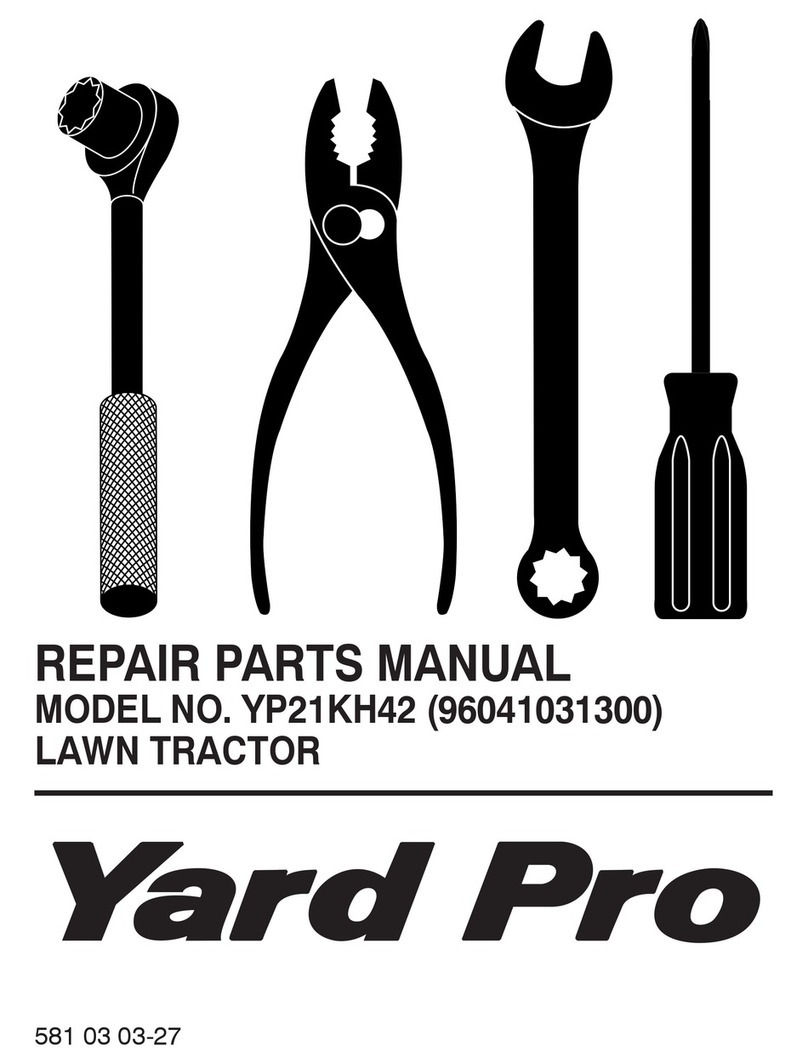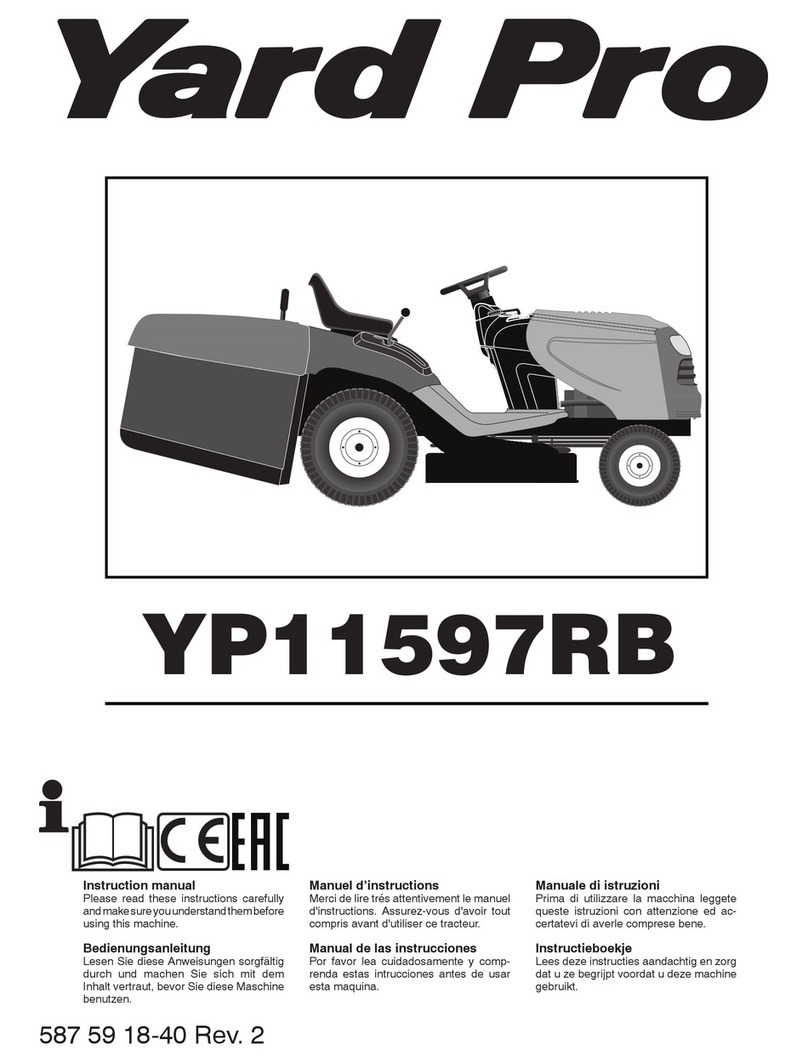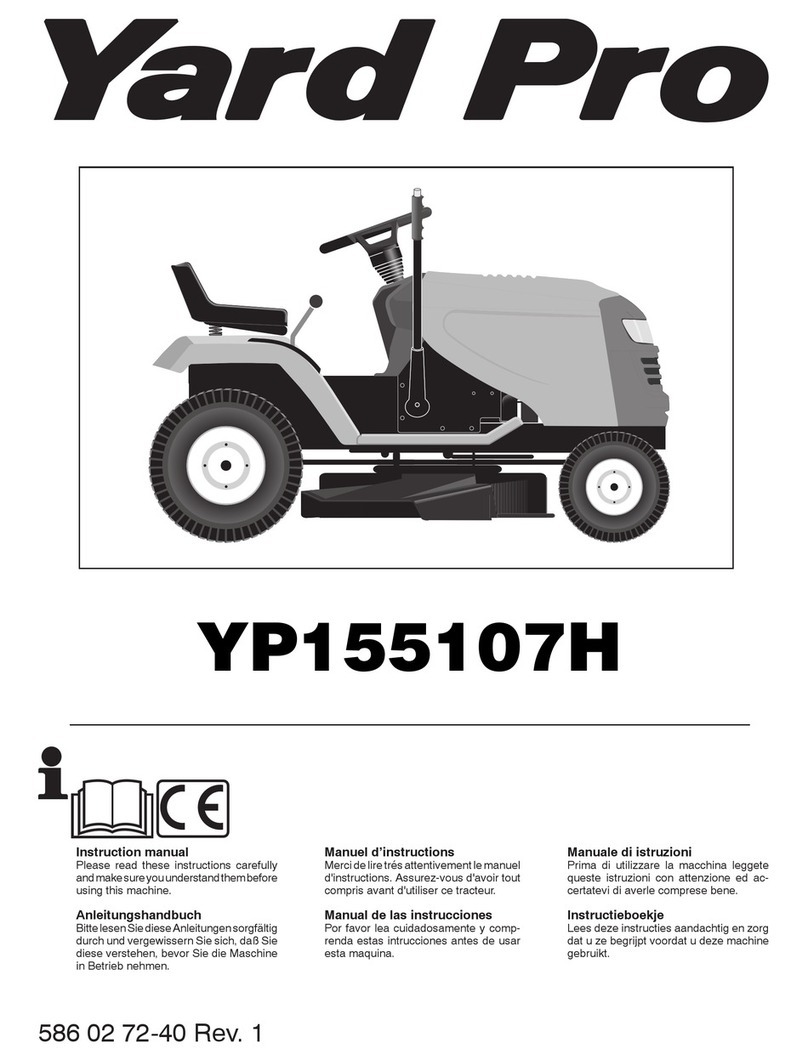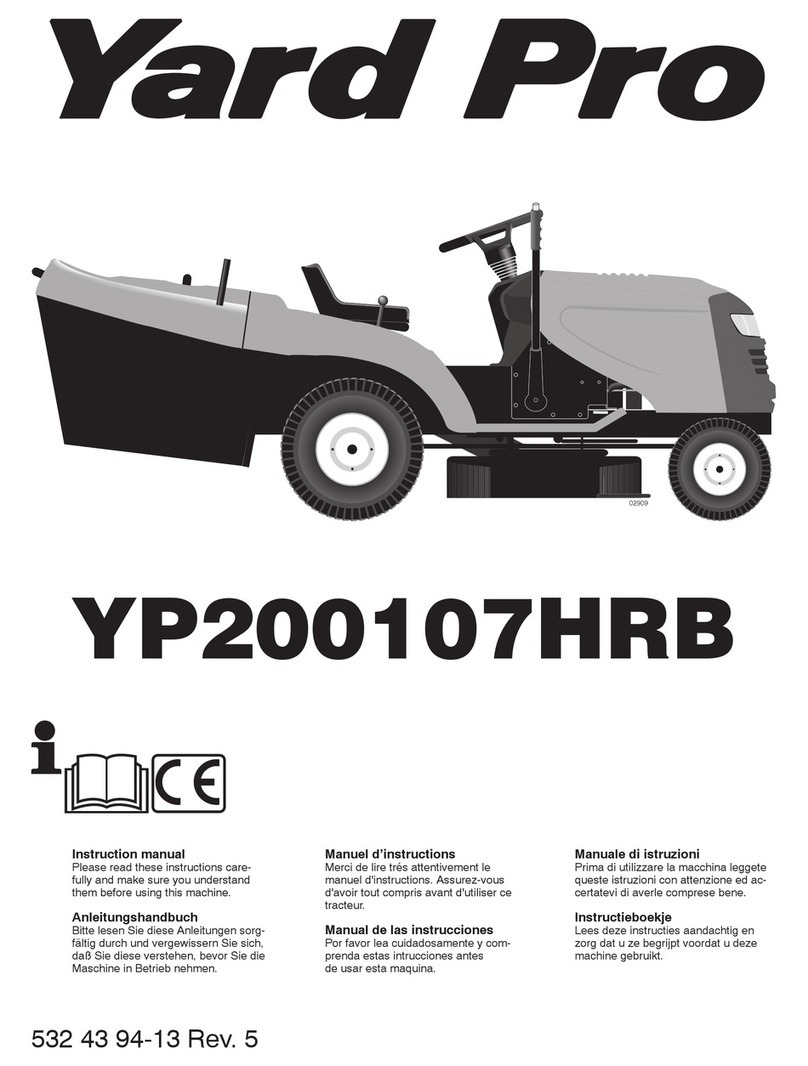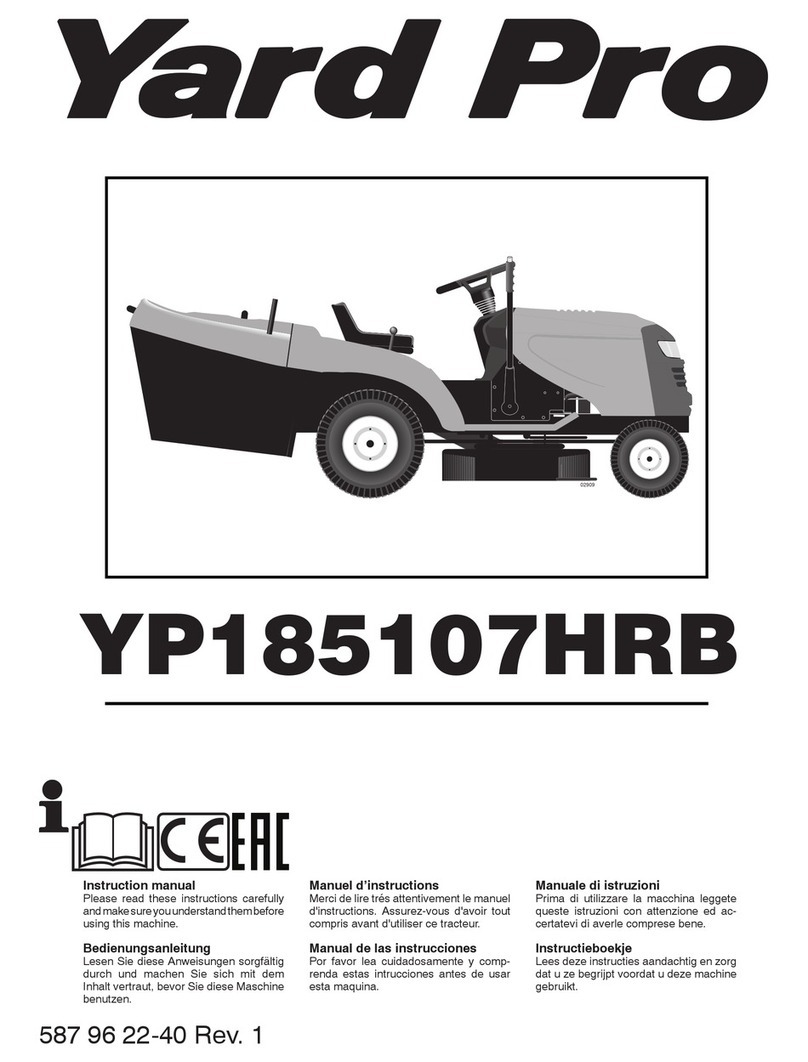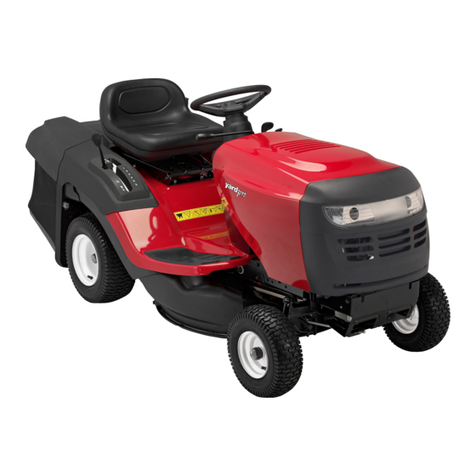
3
III. SLOPE OPERATION
WARNING! When loading or unloading
this machine, do not exceed the maximum
recommended operation angle of 15°.
Slopes are a major factor related to loss of control and tip-over
accidents, which can result in severe injury or death. Operation
on all slopes requires extreme caution. If you cannot back up
the slope or if you feel uneasy on it, do not mow it.
• Mow up and down slopes, not across.
• Watch for holes, ruts, bumps, rocks, or other hidden ob-
jects. Uneven terrain could overturn the machine. Tall
grass can hide obstacles.
• Choose a low ground speed so that you will not have to
stop or shift while on the slope.
• Do not mow on wet grass. Tires may lose traction. Always
keep the machine in gear when going down slopes.
• Do not shift to neutral and coast downhill.
• Avoid starting, stopping, or turning on a slope. If the tires
lose traction, disengage the blades and proceed slowly
straight down the slope.
• Keep all movement on the slopes slow and gradual. Do
not make sudden changes in speed or direction, which
could cause the machine to roll over.
• Use extreme caution while operating machine with grass
catchers or other attachments; they can affect the stability
of the machine. Do no use on steep slopes.
• Do not try to stabilize the machine by putting your foot on
the ground.
• Do not mow near drop-offs, ditches, or embankments.
The machine could suddenly roll over if a wheel is over
the edge or if the edge caves in.
• If machine stops while going uphill, disengage blades,
shift into reverse and back down slowly.
• Do not turn on slopes unless necessary, and then, turn
slowly and gradually downhill, if possible.
SAFETY RULES
Safe Operation Practices for Ride-On Mowers
IV. TOWING
• Tow only with a machine that has a hitch designed for
towing. Do not attach towed equipment except at the hitch
point.
• Follow the manufacturer's recommendation for weight
limits for towed equipment and towing on slopes.
• Never allow children or others in or on towed equipment.
• On slopes, the weight of the towed equipment may cause
loss of traction and loss of control.
• Travel slowly and allow extra distance to stop.
V. SERVICE
SAFE HANDLING OF GASOLINE
To avoid personal injury or property damage, use extreme
care in handling gasoline. Gasoline is extremely flammable
and the vapors are explosive.
• Extinguish all cigarettes, cigars, pipes, and other sources
of ignition.
• Use only approved gasoline container.
• Never remove gas cap or add fuel with the engine running.
• Allow engine to cool before refueling.
• Never fuel the machine indoors.
• Never store the machine or fuel container where there
is an open flame, spark, or pilot light such as on a water
heater or other appliances.
• Never fill containers inside a vehicle or on a truck or
trailer bed with plastic liner. Always place containers on
the ground away from your vehicle when filling.
• Remove gas-powered equipment from the truck or trailer
and refuel it on the ground. If this is not possible, then
refuel such equipment with a portable container, rather
than from a gasoline dispenser nozzle.
• Keep the nozzle in contact with the rim of the fuel tank or
container opening at all times until fueling is complete.
Do not use a nozzle lock-open device.
• If fuel is spilled on clothing, change clothing immediately.
• Never overfill fuel tank. Replace gas cap and tighten
securely.
GENERAL SERVICE
• Never operate machine in a closed area.
• Keep all nuts and bolts tight to ensure the equipment is
in safe working condition.
• Never tamper with safety devices. Never interfere with
the intended function of a safety device or reduce the
protection provided by a safety device. Check there proper
operation regularly. NEVER operate a machine with a
safety device that does not function properly.
• Keep machine free of grass, leaves, or other debris build-
up. Clean oil or fuel spillage and remove any fuel-soaked
debris. Allow machine to cool before storing.
• If you strike a foreign object, stop and inspect the machine.
Repair, if necessary, before restarting.
• Never make any adjustments or repairs with the engine
running.
• Check grass catcher components and the discharge chute
frequently and replace with manufacturer's recommended
parts, when necessary.
• Mower blades are sharp. Wrap the blade or wear gloves,
and use extreme caution when servicing them.
• Check brake operation frequently. Adjust and service as
required.
• Maintain or replace safety and instruction labels, as nec-
essary.
Use ear protectors to avoid damage to hearing.
Always wear eye protection when operating machine.
